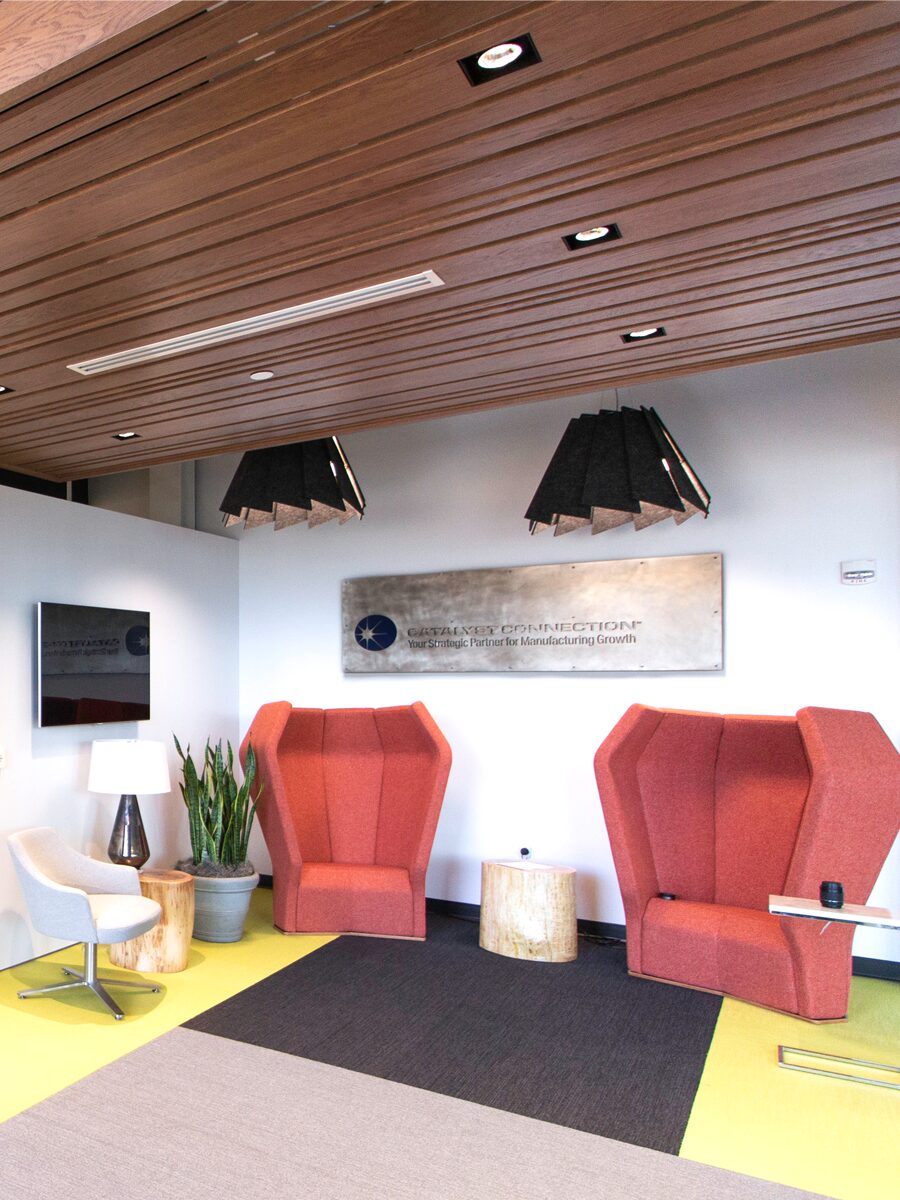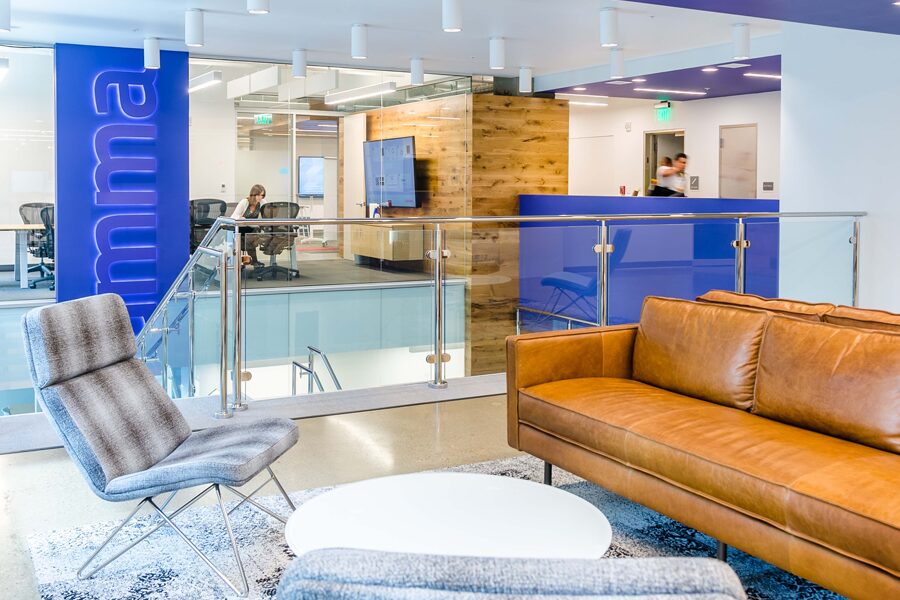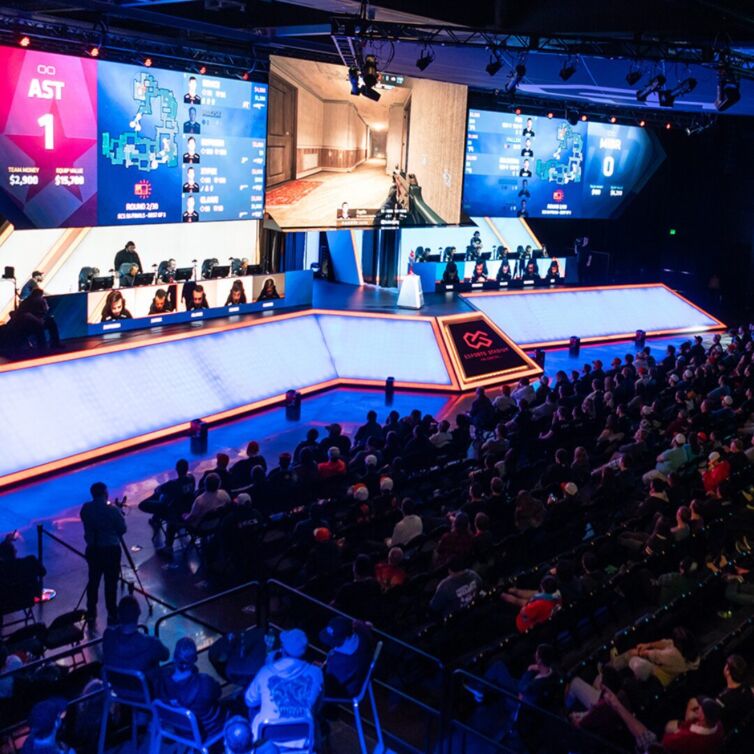From Cubicles to Communities: The Neighborhood Office Revolution
Improving the In-Office Experience | February 5, 2024
In today’s fast-paced world, the pursuit of efficiency extends beyond our daily lives and into the workplace.
Fostering human connection through thoughtful design has become increasingly vital to the overall workplace design. As we navigate the ever-growing emphasis on workplace efficiency, it’s essential to reevaluate traditional office.
A user-friendly office environment that mimics the community spirit found in neighborhoods is often overlooked when planning.
Finding a balance between the human experience and the demands of technology and logistics is the key.
While offices and neighborhoods may seem like contrasting concepts, the rise of neighborhood offices has gained momentum among forward-thinking companies and building owners.
This shift signifies a departure from the conventional, marking a new era where collaborative spaces take center stage.

A Balancing Act
Neighborhood offices seamlessly integrate the best elements of traditional and flexible office setups.
Traditionally, offices have adhered to the cubicle design, confining individuals to private boxes that create physical barriers among employees. This setup can lead to feelings of isolation, negatively impacting the company overall.
Embracing flexible office layouts removes these barriers and introduces an open, collaborative environment. Despite initial concerns related to noise control and privacy, various open layout options cater to diverse employee needs. This allows for tailored and efficient use of office space.
Neighborhood Offices, Defined
Neighborhood offices are meticulously crafted to fulfill the comprehensive needs of businesses and their employees.
Within these innovative spaces, provisions are made for collaborative work, individual desks, and team-based areas.
The versatility of office neighborhoods is exemplified through various layout options, including team-specific arrangements, activity-based designs, and open seating configurations.
Finding a balance between the human experience and the demands of technology and logistics is the key.

Team-specific layouts strategically group employees from the same departments, facilitating efficient collaboration in project work.
Activity-based layouts prioritize work types over job roles, offering designated areas for focused individual tasks and collaborative spaces for group endeavors.
In contrast to traditional offices, open seating layouts empower employees to choose their seating preferences daily, fostering a fluid and personalized workspace experience.
Crafting a neighborhood office is far from a one-size-fits-all task; it offers a spectrum of options.
The answer lies in proactively implementing changes and attentively listening to employee feedback. By blending various layout types, the perfect neighborhood office can be created to meet the unique needs and preferences of the workforce.
Benefits of Neighborhood Offices
Collaboration: Effective collaboration is crucial for office productivity. Workplace barriers hinder performance, emphasizing the need for collaborative spaces. In a neighborhood configuration, physical barriers are removed, emphasizing efficient teamwork without the constraints of traditional office layouts.
Providing designated collaborative spaces eliminates the need for coordinating meetings, allowing employees to effortlessly engage in joint efforts.
Comfortability: A lack of comfort in the workplace has a direct and adverse impact on performance and the overall work experience for individuals. The idea is simple; a comfortable environment leads to better performance and overall happiness for employees.

Autonomy: Empowering employees with the ability to make choices, right down to selecting their own desk, is both natural and empowering. The need for autonomy is innate. When individual needs and preferences are suppressed, it inevitably results in weak performance across various aspects, including our work.
Efficiency: Efficiency is maximized with user-friendly booking software and a variety of seating and room options. An office designed to adapt to any requirement inherently outperforms traditional office setups.
Flexibility: The post-pandemic shift in work dynamics demands a corresponding evolution in office settings. Integrating hybrid work has become exceptionally convenient, thanks to neighborhood office layouts. Taking note of everyone’s unique work styles and preferences, neighborhood offices stand out as an ideal solution.
Adaptability: A standout feature of neighborhood offices lies in their natural adaptability. In our ever-changing world and workplace, the ability to adapt is essential.
When the requirements of your company or employees evolve, an open and flexible office space can easily accommodate these changes. Informed by research and data, you have the flexibility to select the most suitable amenities, policies, booking systems, and more.
Neighborhood Offices Done Right
Unlocking the potential of neighborhood offices requires a strategic approach. Begin by conducting thorough research, tapping into valuable employee feedback, and leveraging relevant data to inform your decisions.
This foundation is crucial for establishing a successful and efficient neighborhood office that aligns with the needs and preferences of your workforce.
When it comes to desk arrangements, consider the options of hot desking and desk hoteling. Hot desking operates on a first-come, first-serve basis, allowing employees to choose their desks upon arrival.
On the other hand, desk hoteling involves a more structured approach, where employees can ‘book’ their desks in advance. This planning flexibility offers a valuable edge over hot desking, providing employees with the time and certainty to strategize their workspace usage.
Opting for desk booking adds a layer of flexibility and also alleviates the stress and anxiety associated with uncertainty about seating arrangements.
By embracing this approach, the fast-paced twists and turns of life become more manageable, contributing to a smoother and more adaptive office experience.
Overall, the modern workplace demands a re-imagining of traditional office setups, giving rise to the concept of neighborhood offices.
This paradigm shift, fueled by the pursuit of efficiency and the need for adaptable workspaces, has gained momentum among forward-thinking companies and building owners.
The integration of traditional and flexible office elements, coupled with user-friendly layouts and advanced technologies, has proven instrumental in promoting collaboration, enhancing comfort, and empowering autonomy.
The neighborhood office, a versatile and adaptive environment, meets the diverse needs of today’s workforce while also addressing the challenges posed by the dynamic nature of work in our high-speed world.
As we navigate the landscape of work, neighborhood offices emerge as a beacon of innovation, marking a departure from the conventional, focusing on the human experience and technological advancements to redefine the workplace.
For more on workplace design check out our insight on Professor & Student Collaboration Spaces.





